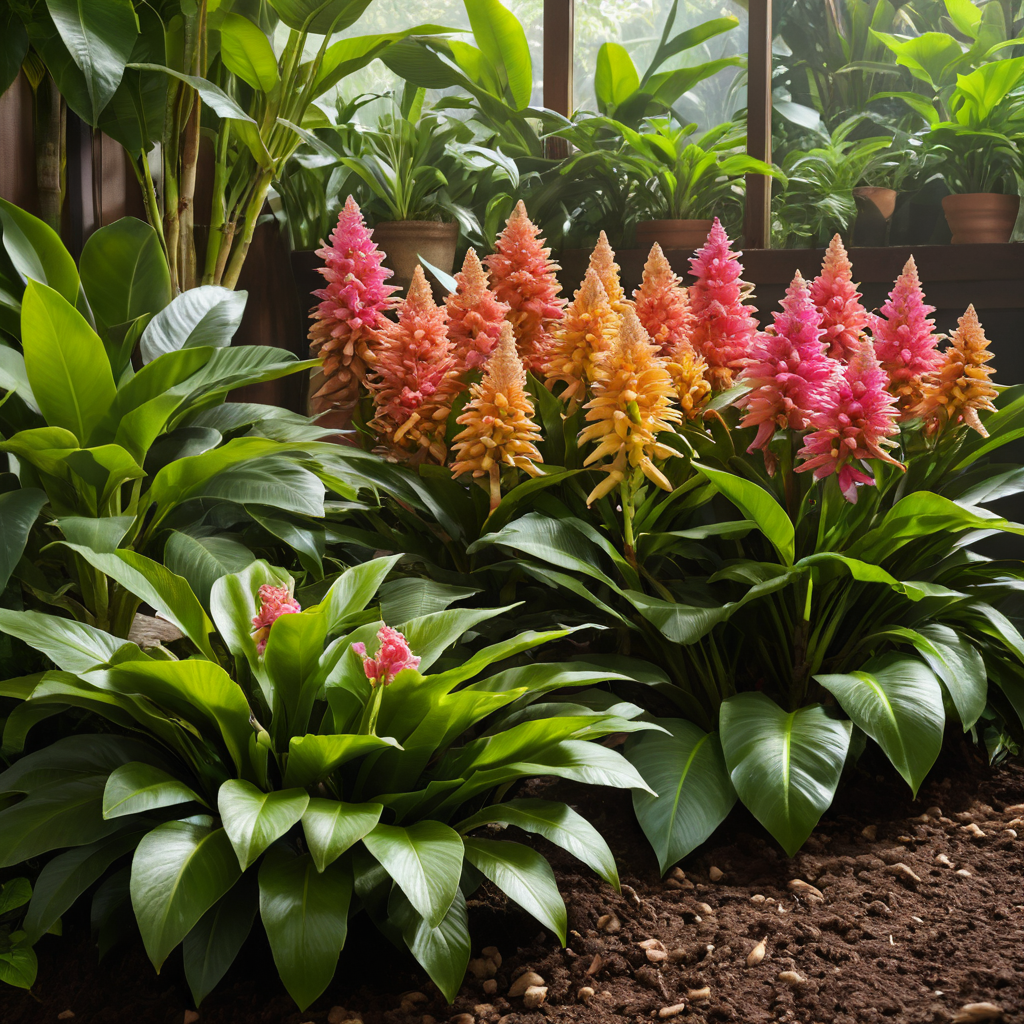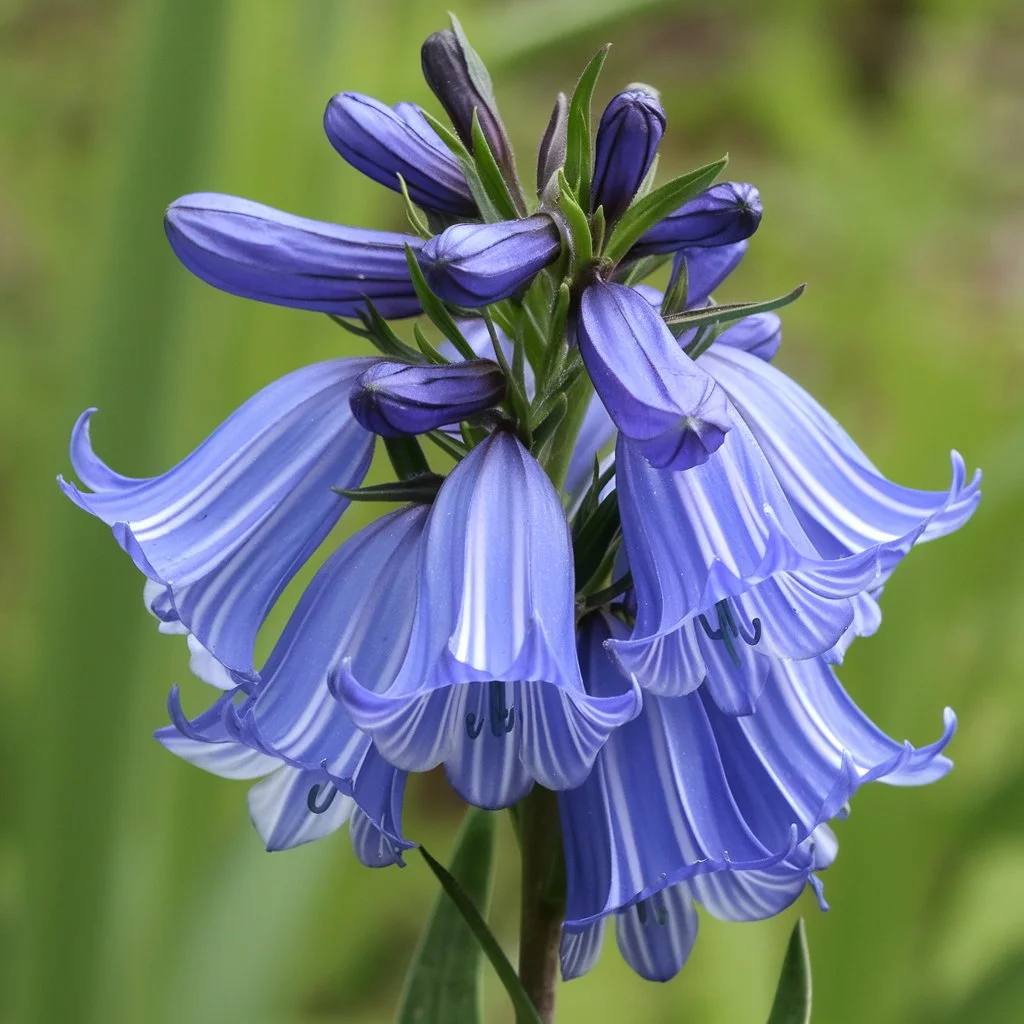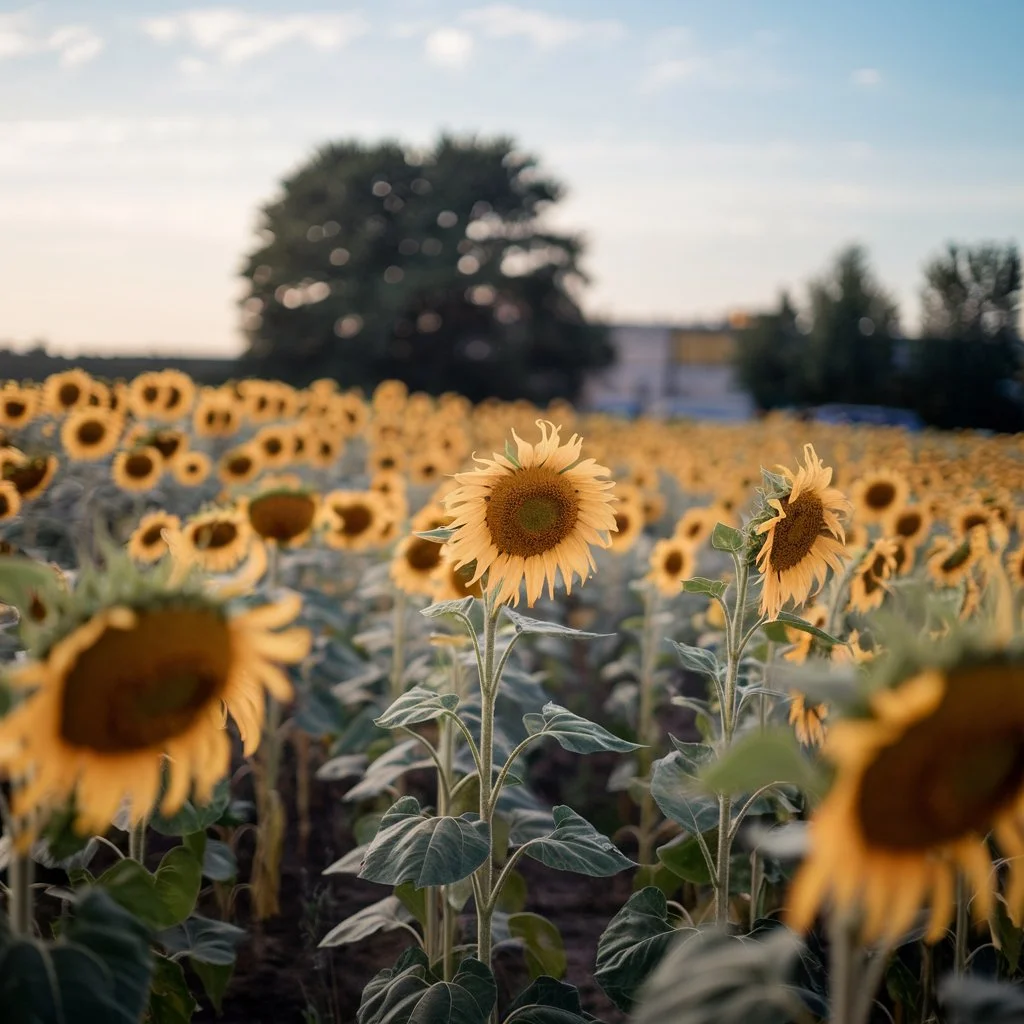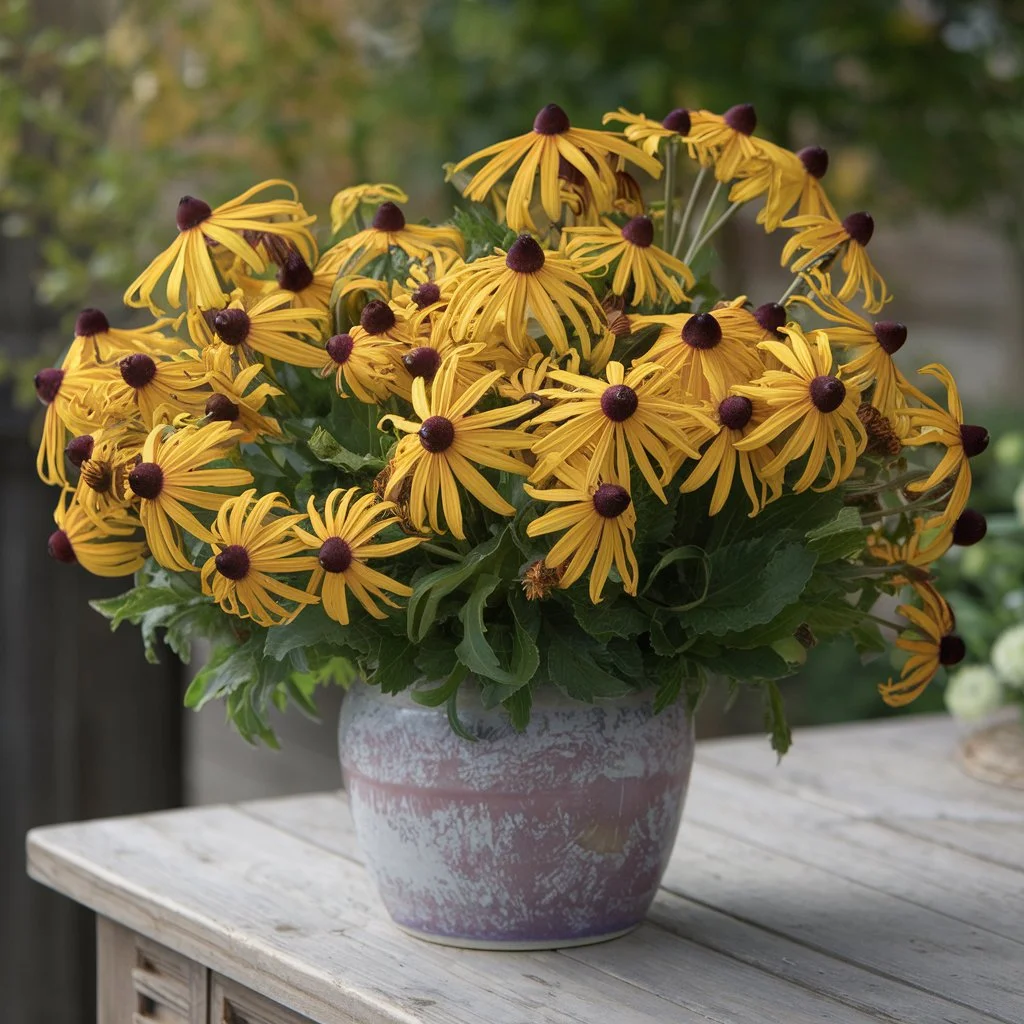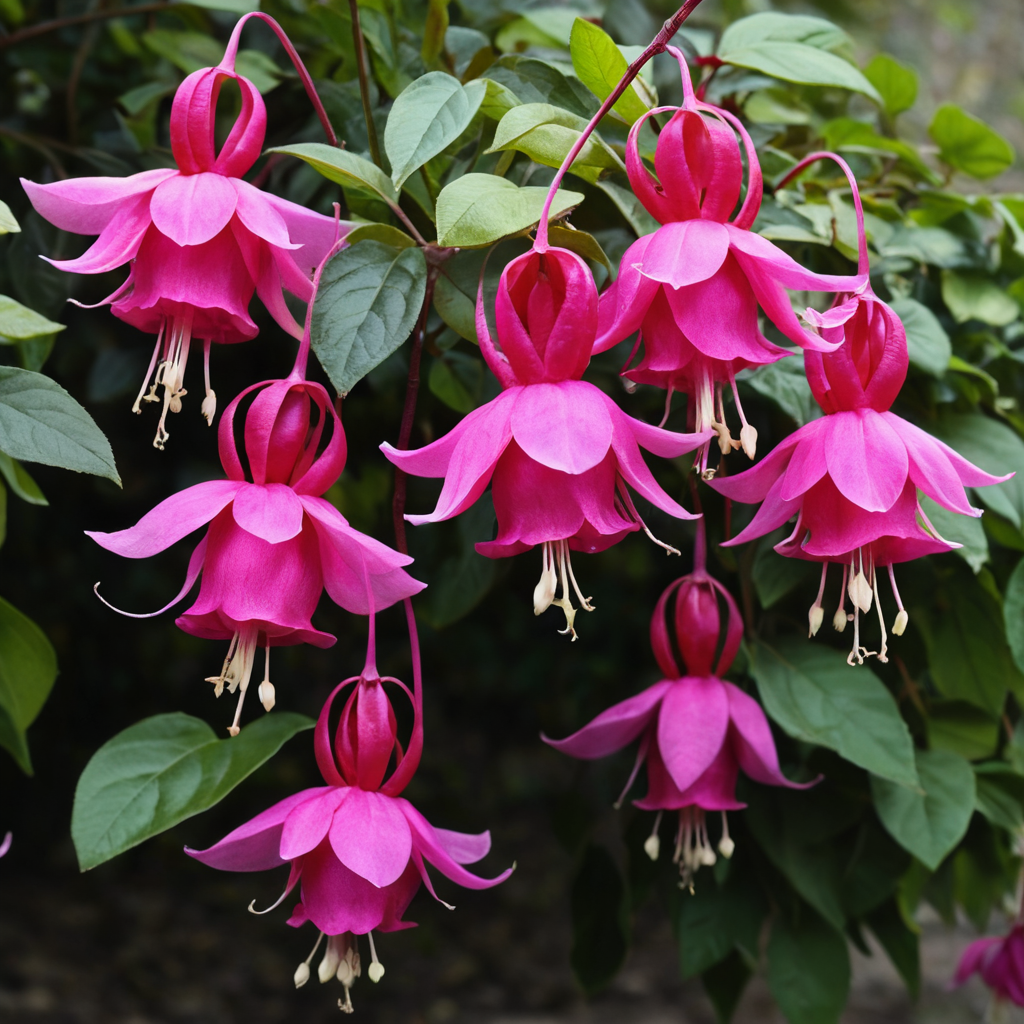Ginger flowers aren’t just plants—they’re a touch of tropical magic you can bring right into your home or garden. With their dazzling blooms and lush foliage, they’re like nature’s version of a standing ovation. But here’s the thing: while they might look exotic and unattainable, they’re surprisingly easy to grow with just a little know-how.
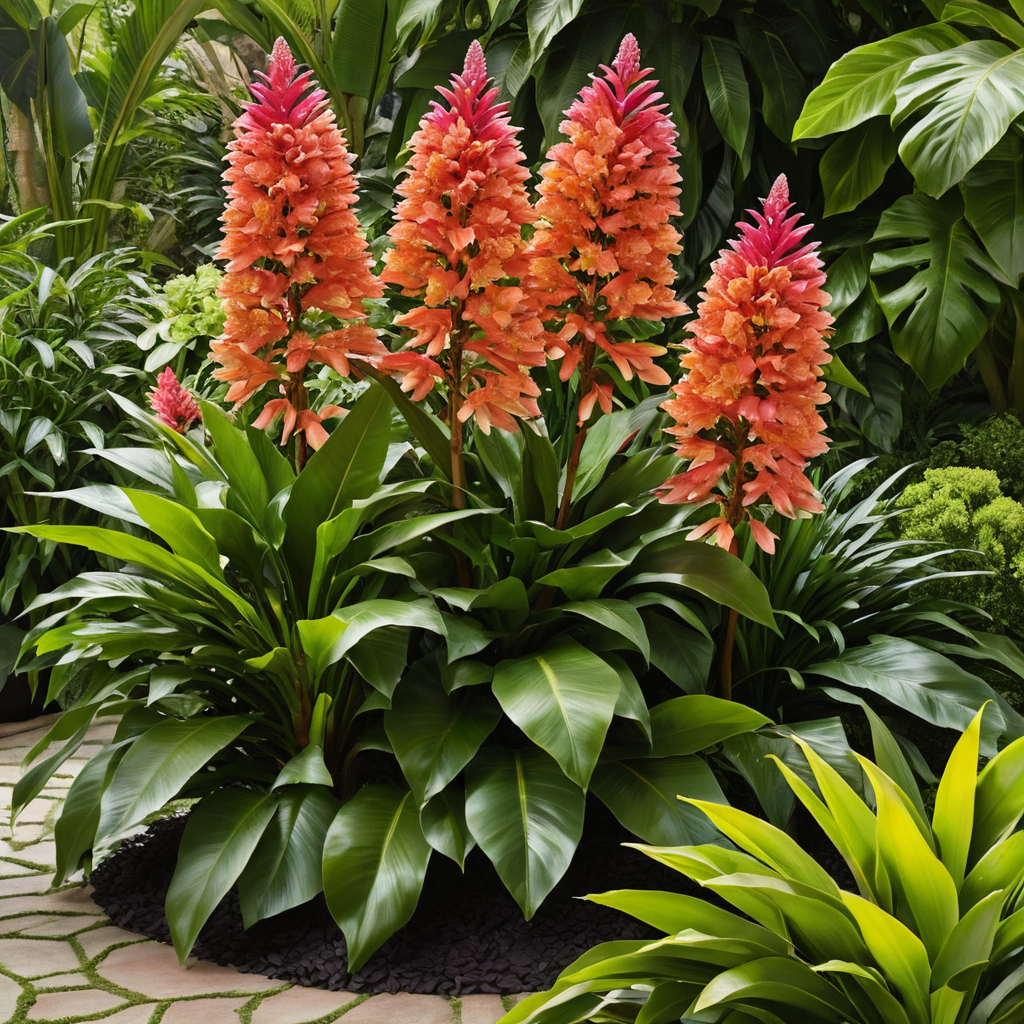
What’s the secret to making your ginger flowers thrive? Is it about pampering them with the right amount of sun? Getting the soil mix just perfect? Or maybe coaxing them to bloom their hearts out year after year? Well, you’re in luck, because we’ve got the ultimate guide to growing and caring for these botanical showstoppers.
Stick around as we uncover everything from the best ways to keep your ginger flowers happy to sneaky tips for getting them to bloom like pros. Ready to dive into this tropical adventure? Let’s get growing! 🌺
To grow and nurture ginger flowers, plant them in rich, well-draining soil with plenty of organic matter and place them in a spot with bright, indirect sunlight. Water regularly to keep the soil consistently moist, and provide high humidity and warmth for optimal growth. Feed them with a balanced fertilizer during their active growing season and prune spent flowers to encourage new blooms.
Introduction to Ginger Flowers
Step into the vibrant world of ginger flowers—a plant that effortlessly combines tropical beauty with a dash of elegance! Known for their striking blossoms and lush, dramatic foliage, these flowers are a showstopper in any garden or indoor space. From fiery reds and sunlit oranges to delicate pinks and creamy whites, ginger flowers add a burst of color and texture that’s nothing short of magical.
Why Ginger Flowers Are Garden Royalty
Ginger flowers have a unique charm that makes them stand out from the crowd. Here’s why they’re adored:
- Ornamental Appeal: Their bold, vibrant blooms and leafy greenery are nature’s answer to a work of art. Whether swaying gracefully in the garden breeze or perched in a stylish indoor pot, they never fail to captivate.
- Versatility: These plants thrive both outdoors and indoors. Use them to create a lush, tropical garden oasis, or bring their exotic vibe into your living room, kitchen, or even a steamy bathroom corner (they’ll love the humidity!).
Unique Features of Ginger Flowers
What sets ginger flowers apart from other blooms? It’s their captivating personality! Their blossoms often have intricate shapes and textures that look like they were crafted by an artist. Some varieties even emit a sweet fragrance, adding another sensory layer to their appeal. Beyond their visual and aromatic charm, they’re surprisingly hardy and adaptable, making them a favorite for both seasoned gardeners and beginners.
Whether you’re drawn to their vibrant colors, dramatic foliage, or exotic energy, ginger flowers have something for everyone. Curious to learn the secrets of growing these tropical wonders? Stick with us, and we’ll show you how to nurture their beauty and make them flourish! 🌺
Essential Care Tips for Ginger Flowers
Ginger flowers may look like exotic divas, but they’re not as high-maintenance as they appear. With just a little attention to their needs, they’ll reward you with dazzling blooms and lush greenery. Ready to learn how to keep your ginger flowers happy? Let’s break it down into simple, practical steps.
Optimal Lighting Conditions
Ginger flowers love the light but prefer to keep it indirect—think bright, filtered sunlight instead of harsh, direct rays.
- Outdoors: Place them in a partially shaded spot where they can soak up the morning sun but avoid the scorching afternoon heat.
- Indoors: A sunny window with sheer curtains works wonders, or try an east-facing window for gentle, consistent light.
Too much direct sunlight can scorch their leaves, while too little light might leave them looking a little lackluster. Aim for balance, and your plants will glow.
Ideal Soil Composition
These tropical beauties thrive in rich, well-draining soil that’s slightly acidic to neutral (pH 6.0–7.0). Here’s how to create the perfect soil environment:
- Texture: Loose and airy soil is ideal—think loamy with excellent drainage to prevent waterlogging.
- Organic Matter: Mix in compost, peat moss, or well-rotted manure to give them the nutrient boost they crave.
Good soil is the foundation of thriving ginger flowers, so don’t skimp on quality!
Watering Guidelines
If there’s one thing ginger flowers hate, it’s drying out. But they’re not fans of soggy roots either, so finding the sweet spot is key.
- How Often: Water regularly to keep the soil consistently moist, especially during their active growing season in spring and summer.
- Technique: Water deeply but allow the top inch of soil to dry out slightly between waterings.
During the dormant season, ease up on watering—too much moisture can lead to root rot when growth slows down.
Temperature and Humidity Needs
Ginger flowers are tropical at heart, so they thrive in warm, humid environments.
- Temperature: Keep them in a range of 60–85°F (16–29°C). They’ll struggle if temperatures dip below 50°F (10°C).
- Humidity: They adore high humidity (60–80%), so mist their leaves regularly or place a humidifier nearby.
For indoor plants, a pebble tray filled with water can help boost humidity around the plant. Treat them like they’re on a tropical vacation, and they’ll flourish.
Nutrient Needs and Fertilizing
These heavy feeders love a steady diet of nutrients during their growing season.
- Best Fertilizer: Use a balanced, slow-release fertilizer or one formulated for flowering plants (e.g., 10-10-10 or 10-20-10).
- Frequency: Feed them every 4–6 weeks during spring and summer to keep their blooms vibrant and leaves lush.
During the fall and winter, you can let them rest—no need for fertilizer when growth slows down. Just remember: a well-fed ginger flower is a happy, blooming ginger flower.
By giving your ginger flowers the right light, soil, water, and care, you’ll have a plant that’s not just surviving but absolutely thriving. 🌱✨
Popular Varieties of Ginger Flowers
Ginger flowers aren’t just one-size-fits-all. In fact, they come in a dazzling array of varieties, each with its own unique charm. Whether you’re looking for a showy statement plant or a more subtle beauty to complement your garden, there’s a ginger flower for every taste. Let’s dive into some of the most popular types that’ll have you swooning over their beauty!
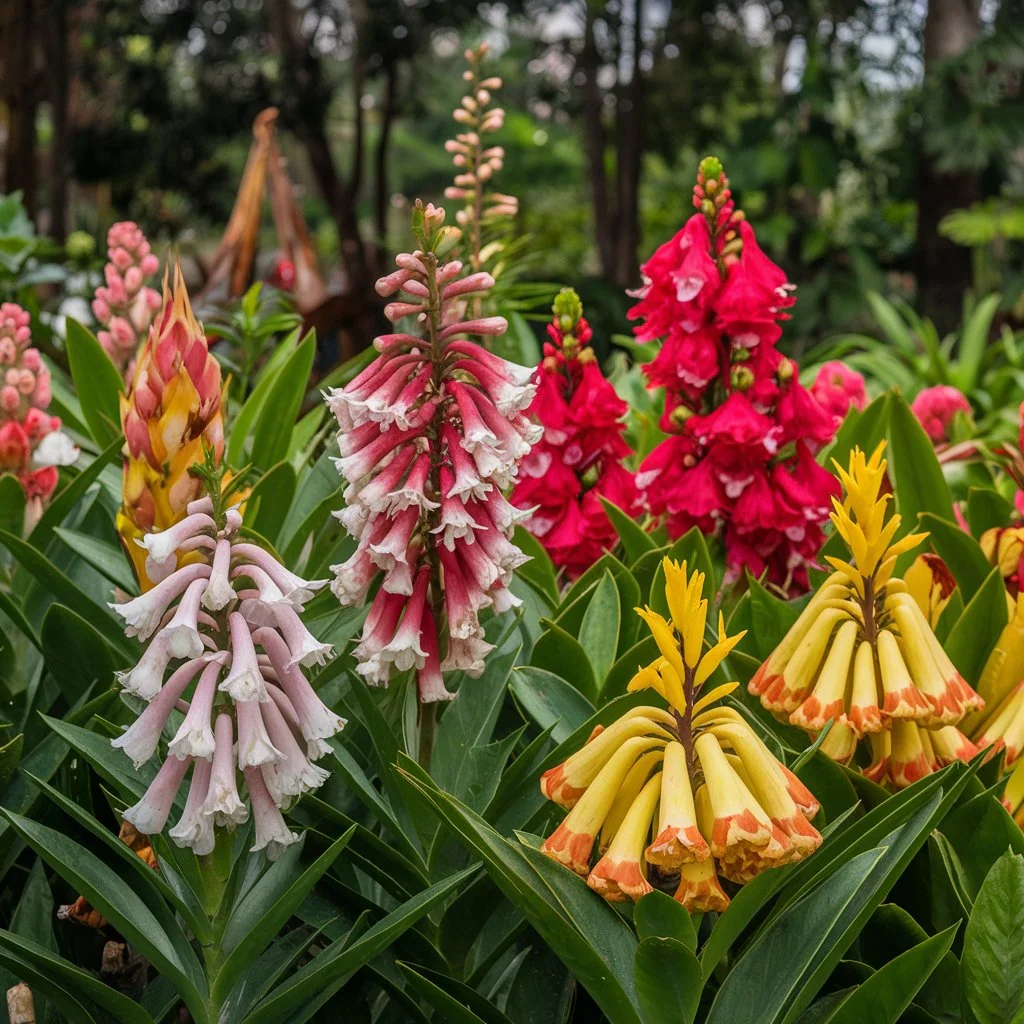
1. Red Torch Ginger (Etlingera elatior)
If you’re looking for drama, look no further than the Red Torch Ginger. With its bold, fiery red blooms and towering stature, this variety is perfect for adding a tropical punch to any space.
- Height: It can grow up to 10 feet tall (yes, it’s a giant!).
- Why It’s Special: The vibrant red flowers are absolutely breathtaking and can last for weeks. Perfect for creating a bold garden statement or as a showstopper in larger indoor spaces.
2. Pink Ginger (Zingiber zerumbet)
For something a little more gentle but just as stunning, the Pink Ginger is a go-to choice. With its soft, blush-pink flowers and graceful appearance, it brings a touch of elegance wherever it goes.
- Height: Typically grows up to 3–4 feet tall.
- Why It’s Special: It’s not only beautiful but also fragrant, making it a great addition to both your garden and your indoor spaces. Plus, it’s relatively easy to grow compared to other ginger varieties!
3. Ginger Lily (Hedychium spp.)
Also known as Butterfly Ginger, this variety is perfect for those who love a fragrant flower. The Ginger Lily features delicate, butterfly-shaped blooms in shades of white, yellow, and orange.
- Height: It can reach 4–6 feet tall, with lush, tropical foliage to complement the flowers.
- Why It’s Special: The flowers release a delightful fragrance, especially in the evening, making it a beautiful option for creating a fragrant garden retreat.
4. Shampoo Ginger (Zingiber shampoo)
This quirky variety isn’t just a pretty face—its roots have been used for centuries to make a natural shampoo! The Shampoo Ginger features yellow-orange flowers and long, narrow leaves that add texture to any garden.
- Height: Grows up to 3 feet tall.
- Why It’s Special: Beyond its beauty, the root contains a gel-like substance that’s been used traditionally for cleaning hair and skin. How cool is that?
5. White Ginger (Hedychium coronarium)
The White Ginger, or “Garland Lily,” is all about elegance. With its pure white flowers and fragrant scent, it’s a classic choice for any garden or indoor arrangement.
- Height: Typically grows between 3–4 feet tall.
- Why It’s Special: Its heady fragrance is irresistible, and it blooms in late summer to early fall, offering a beautiful contrast to other seasonal flowers.
6. Yellow Ginger (Zingiber officinale)
You might know this variety for its culinary uses, but its yellow ginger flower is a stunner too! The flowers have a slightly more subdued color but still pack a punch in any garden or pot.
- Height: Grows about 3–4 feet tall.
- Why It’s Special: In addition to its culinary benefits, the plant produces fragrant flowers and is relatively easy to grow, making it a great all-around addition to your ginger collection.
Which One Should You Choose?
Each ginger flower variety brings something unique to the table—whether you’re after bold colors, fragrant blooms, or even a bit of history (we’re looking at you, Shampoo Ginger). So, whether you’re filling up a tropical garden, creating a cozy indoor space, or just adding a touch of exotic flair, there’s a ginger flower variety waiting for you. Go ahead, pick your favorite and watch it work its magic! 🌺
Maintenance and Growth Enhancement
Once you’ve got your ginger flowers settled in, it’s time to give them a little extra love to keep them flourishing. Proper maintenance and a few growth-enhancing techniques will help your flowering ginger thrive season after season. Here are some essential tips to keep your ginger plant flowering beautifully.
Pruning Practices
Pruning is one of the best ways to encourage healthy growth and maintain the beauty of your ginger flowers. While these tropical beauties don’t require heavy pruning, a little attention to detail will go a long way.
- Deadheading: As the flowers fade, be sure to remove any spent blooms to prevent the plant from putting energy into producing seeds. This helps redirect energy into creating fresh growth and new blooms.
- Cutting Back Foliage: If the leaves become damaged or overly dense, trim them back to improve air circulation. Cutting back dead or yellowing leaves can help your ginger plant focus on growing new, vibrant foliage.
- Timing: Prune your ginger flowers in the late winter or early spring before the new growing season kicks off to encourage fresh growth and more flowering.
Propagation Techniques
Want to multiply your ginger flowers and grow more of these stunning plants? Propagating your ginger plant is simple and rewarding. You can easily propagate by division or rhizome cutting. Here’s how:
- Division: Gently separate the rhizomes of mature ginger plants. Make sure each division has at least one healthy shoot and some roots. Replant these divisions in fresh, well-draining soil for new ginger plants.
- Rhizome Cuttings: If you prefer to start with cuttings, choose a healthy, plump rhizome and cut it into sections that each have a bud. Let the cut sections sit for a day or two to callous over, then plant them in moist soil. Be patient, as they will take a few weeks to sprout.
- Timing: The best time to propagate ginger flowers is in the spring, during the plant’s active growing season, so they have plenty of time to establish roots before winter.
Potting and Repotting Tips
When growing ginger flowers in containers, the right pot and regular repotting are key to success. Ginger plants can outgrow their pots quickly, so repotting every 1–2 years ensures they have enough space to spread out and continue growing strong.
- Choosing the Right Pot: When selecting a pot for ginger flowers, it’s crucial to ensure it offers proper drainage to prevent waterlogging. Orchid flower pots are a great choice for this. Their design not only allows excellent drainage but also adds a touch of elegance to any indoor space.
- Soil: Use well-draining, loamy soil with plenty of organic matter to mimic the plant’s natural environment. This helps maintain the right moisture levels without causing root rot.
- Repotting: When repotting, gently loosen the root ball and remove any dead or rotting roots. Plant your ginger in fresh soil and water thoroughly. Repot in the spring, just before the growing season begins, to give your ginger flowers a strong start.
By pruning, propagating, and repotting your ginger flowers with care, you’ll encourage healthy growth and keep your plant blooming season after season. Whether you’re growing ginger flowers for their vibrant colors or to enjoy their unique beauty, these maintenance tips will ensure your flowering ginger thrives. 🌿
Seasonal Considerations
Just like any tropical plant, your ginger flowers have specific needs as the seasons change. Understanding how to care for them throughout the year ensures that your flowering ginger continues to thrive, even as temperatures drop or conditions shift. Let’s explore how to prepare your ginger flowers for winter and how to encourage those beautiful blooms.
Preparing for Winter (Overwintering)
When it comes to overwintering, ginger flowers need a little extra attention to survive the colder months, especially if you’re growing ginger flowers indoors or in a region with cold winters. Here’s how to keep your ginger plant flowering through the chillier months:
- Indoor Ginger Flowers: If you’re growing ginger indoors, simply reduce watering and move your plant to a cooler area (around 60–65°F or 15–18°C) to mimic the plant’s natural dormant period. Keep it in bright, indirect light but away from cold drafts or direct heat sources.
- Outdoor Ginger Flowers: In cold climates, it’s essential to dig up your ginger plants before the first frost. Carefully lift the rhizomes and store them in a cool, dry location (like a basement or garage) in a paper bag or container with dry peat moss or sand. In the spring, you can replant the rhizomes to continue growing ginger flowers.
- Mulching: If your ginger is planted in the ground and you can’t dig it up, apply a thick layer of mulch around the base of the plant. This helps insulate the roots and protect them from freezing temperatures.
By preparing your ginger flowers for winter properly, you’ll ensure that they come back strong and ready to bloom again when warmer weather returns.
Encouraging Blooms
Want your ginger flowers to dazzle with beautiful blooms season after season? With the right care, you can encourage flowering ginger to bloom in abundance. Here’s how to help your plant reach its full flowering potential:
- Provide Adequate Light: Ginger plants need plenty of bright, indirect sunlight to flower. If growing ginger flowers indoors, place them in a location that gets 6–8 hours of indirect sunlight each day to promote healthy flowering.
- Temperature and Humidity: Flowering ginger thrives in warm temperatures (60–85°F or 15–29°C) and high humidity (60–80%). To encourage blooms, try to keep your ginger flowers in a consistently warm, humid environment. Use a humidifier, mist the plant regularly, or place it on a pebble tray to maintain humidity levels.
- Fertilizing: Feed your ginger flowers with a balanced fertilizer to provide the nutrients they need for strong, vibrant blooms. Apply fertilizer every 4–6 weeks during the growing season, especially in the spring and summer when your plant is actively flowering.
- Watering: Keep the soil consistently moist, but be careful not to overwater. Too much water can lead to root rot and prevent the plant from blooming properly.
By giving your ginger flowers the right conditions to grow and bloom, you’ll have a beautiful display of flowering ginger that continues to delight. 🌸
Managing Pests and Diseases
As with any plant, ginger flowers can occasionally face a few unwelcome guests in the form of pests and diseases. But don’t worry—managing these issues is easier than you think! With the right care and attention, you can keep your ginger plant flowering beautifully and free from harm. Let’s dive into how to protect your ginger flowers from common pests and diseases.
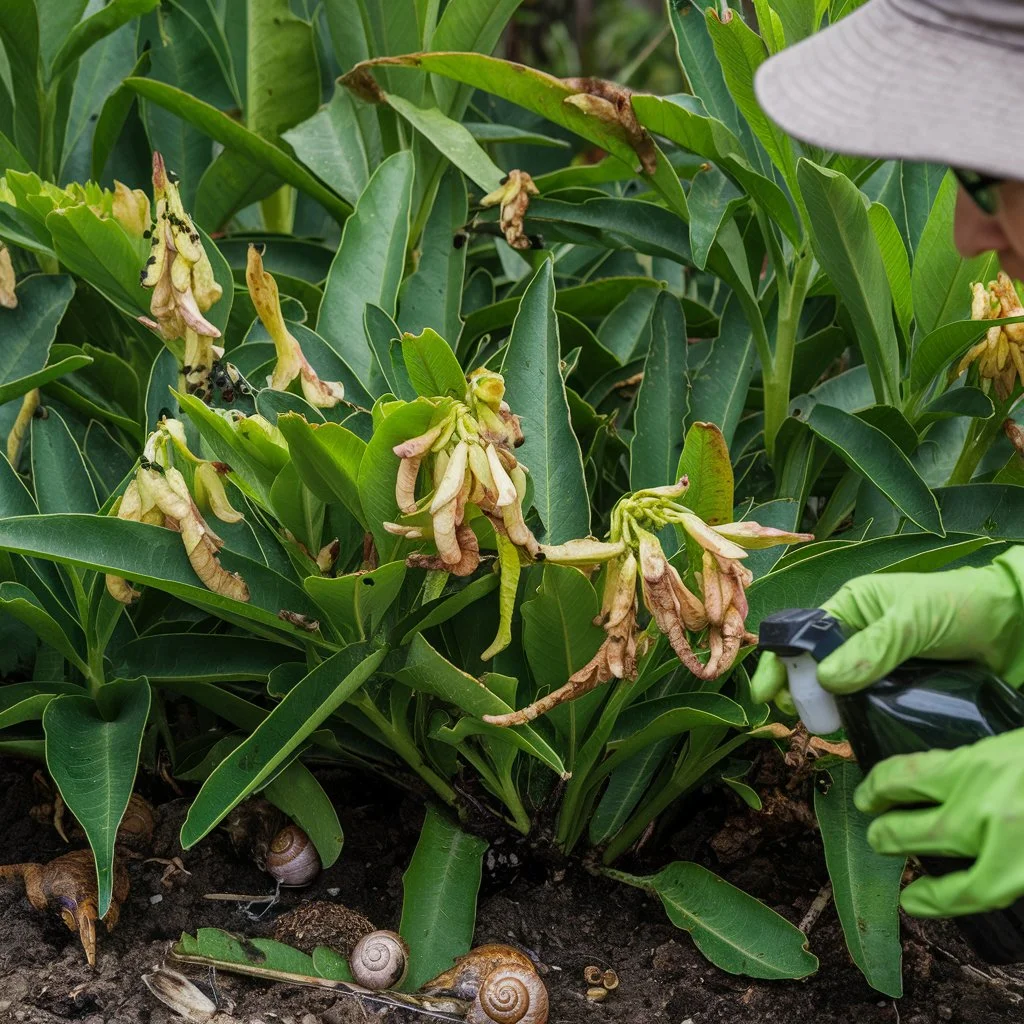
Common Pests That Affect Ginger Flowers
While ginger flowers are generally pest-resistant, there are a few creatures that might try to make a snack of your plant. Here’s a rundown of the most common pests you might encounter:
- Aphids: These tiny insects love to feed on the tender new growth of your ginger flowers. If you notice curled, yellowing leaves or a sticky residue on your plant, aphids are likely the culprits.
- How to Control: Use a gentle stream of water to wash them off or treat your ginger flowers with an insecticidal soap or neem oil.
- Mealybugs: These white, cotton-like pests often gather at the base of the leaves and stems. They can cause your ginger plant to weaken over time.
- How to Control: Remove them manually or use a cotton swab dipped in rubbing alcohol to kill the mealybugs. Regularly inspect your flowering ginger for signs of an infestation.
- Spider Mites: These tiny pests thrive in dry conditions and can cause the leaves of your ginger plant to develop yellow spots and webbing.
- How to Control: Keep the humidity levels up around your ginger plant and wash the leaves with a gentle water spray. If the infestation is severe, consider using miticides or neem oil.
Diseases That Can Affect Ginger Flowers
While ginger flowers are fairly resilient, they can sometimes fall prey to a few diseases, especially if conditions aren’t ideal. Here’s how to spot and manage them:
- Root Rot: Overwatering or poor drainage can lead to root rot, a condition that causes the roots to become mushy and smelly, eventually killing the plant.
- How to Control: Ensure your ginger plant has well-draining soil and water it only when the top inch of soil has dried out. If you notice root rot, remove the affected roots and repot the plant in fresh soil.
- Leaf Spot: This fungal infection can cause dark, water-soaked spots on the leaves, and if untreated, it can spread and damage your ginger plant.
- How to Control: Remove affected leaves promptly and treat the plant with a fungicide or a homemade solution of water and baking soda. Make sure to water at the base of the plant to avoid wetting the foliage, which encourages fungal growth.
- Powdery Mildew: Powdery mildew often appears as white, powdery spots on the leaves and stems of ginger plants, typically in warm, humid conditions.
- How to Control: Increase air circulation around your ginger flowers and remove infected leaves. A mild solution of water and dish soap can help, or use a fungicide designed to combat mildew.
Preventative Care for Healthy Ginger Flowers
The best way to keep your ginger flowers safe from pests and diseases is by giving them the right environment and care from the start. Here are some tips for preventing problems before they start:
- Healthy Soil: Make sure your ginger plant is growing in well-draining soil with plenty of organic matter to avoid waterlogged conditions.
- Proper Watering: Always water at the base of the plant and avoid wetting the leaves, which can promote fungal growth and attract pests.
- Good Air Circulation: Ginger flowers, especially in pots, benefit from good airflow around the plant. Avoid crowding your plants together, and if growing ginger flowers indoors, make sure there’s plenty of ventilation.
- Routine Inspections: Regularly check your ginger plants for signs of pests or disease. Early detection can help prevent a small problem from turning into a big issue.
By managing pests and diseases effectively, you’ll help your ginger flowers stay healthy, vibrant, and blooming beautifully year-round. Keep these tips in mind, and you’ll be rewarded with lush, thriving flowering ginger in no time! 🌿
FAQ
What are the benefits of ginger flowers?
Ginger flowers offer both ornamental and practical benefits, especially in tropical and subtropical gardens. These flowering ginger plants add vibrant color and attract pollinators, enhancing the garden’s ecosystem. Additionally, some types of ginger flowers are believed to have anti-inflammatory and antioxidant properties, adding a therapeutic value.
Are ginger flowers edible?
Yes, certain types of ginger flowers are edible, though they are typically used in small quantities for flavor or decoration. While not commonly consumed, the blooms of some flowering ginger varieties, like red ginger, are occasionally incorporated into culinary dishes. It’s important to confirm the specific ginger flower species before eating.
Do ginger flowers come back year after year?
Ginger flowers are perennial, meaning they return year after year under the right conditions. With proper care and the ideal climate for growing ginger flowers, the ginger plant will continue flowering season after season. In colder regions, the rhizomes may need to be dug up and stored for overwintering to ensure future ginger plant flowering.
What makes red ginger flowers special?
Red ginger flowers are particularly remarkable due to their striking, deep red color, which makes them stand out in any garden or floral arrangement. As one of the most popular types of ginger flowers, they also have long-lasting blooms that remain vibrant for extended periods. The unique ginger flower colors, especially red, make them a favorite for adding dramatic flair to landscaping.
Conclusion
In conclusion, growing and nurturing ginger flowers is a rewarding experience that brings vibrant color and tropical charm to any space. Whether you’re cultivating these stunning blooms indoors or outdoors, the right care—from light and soil to pruning and pest management—will ensure your flowering ginger thrives. By understanding the unique characteristics of different types of ginger flowers and following our tips for seasonal care, you’ll enjoy the beauty of these perennial plants year after year. So go ahead, embrace the joy of growing ginger flowers, and watch your garden (or home) come alive with their stunning blossoms and vibrant hues! 🌸
Check out our latest article for more insights, and follow us on Facebook for updates! and connect with us on Instagram, Pinterest, and YouTube for more inspiration!

